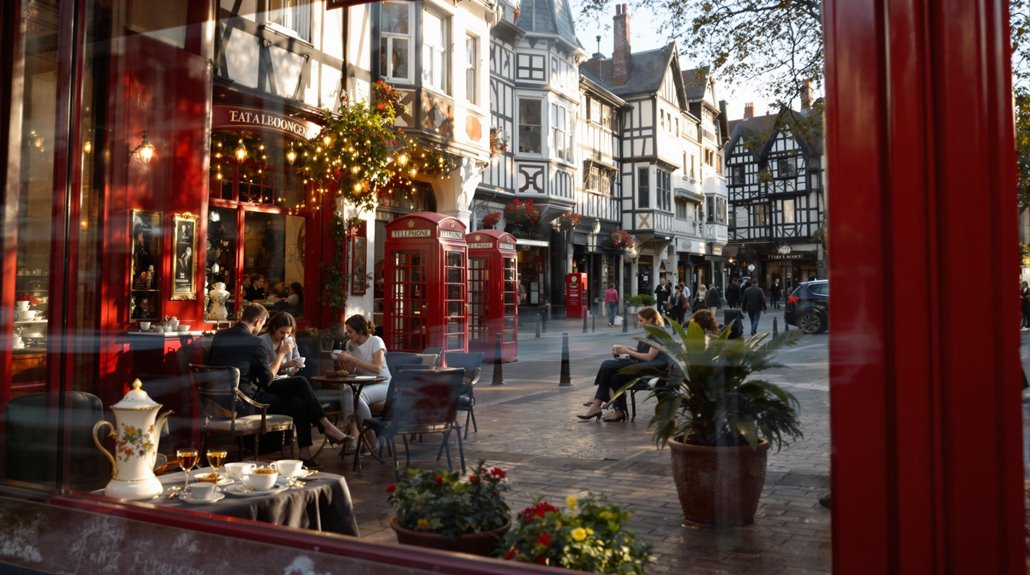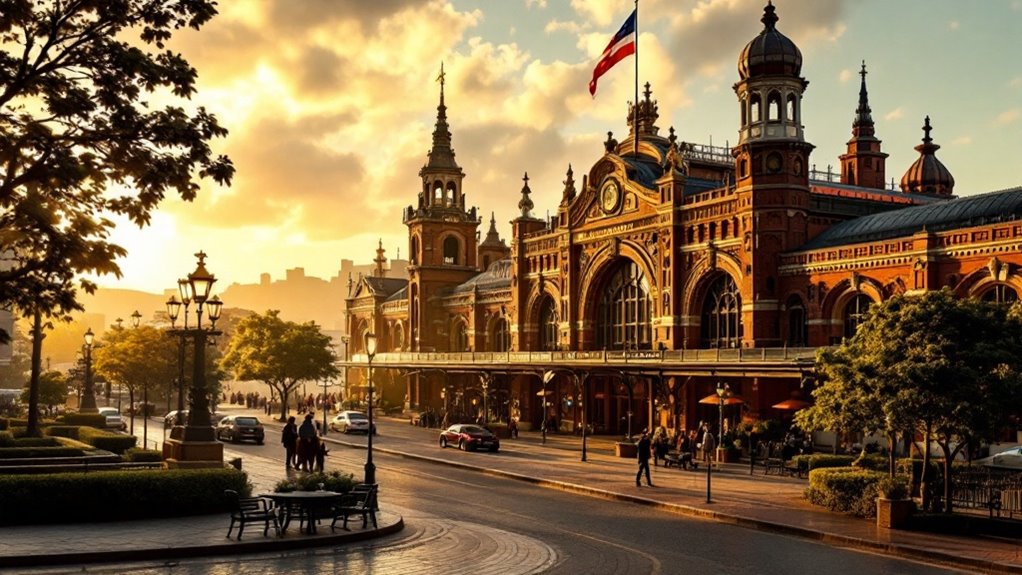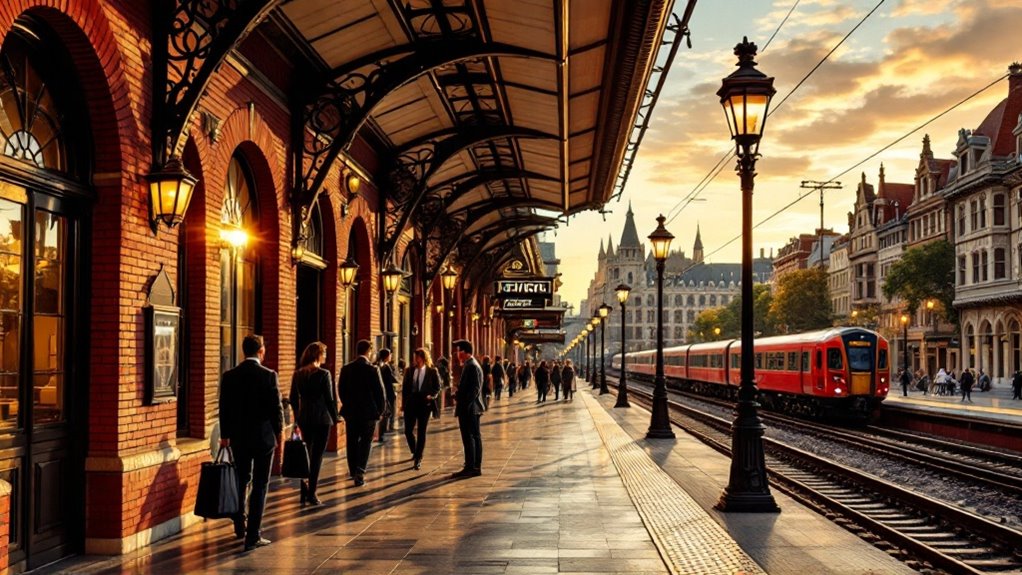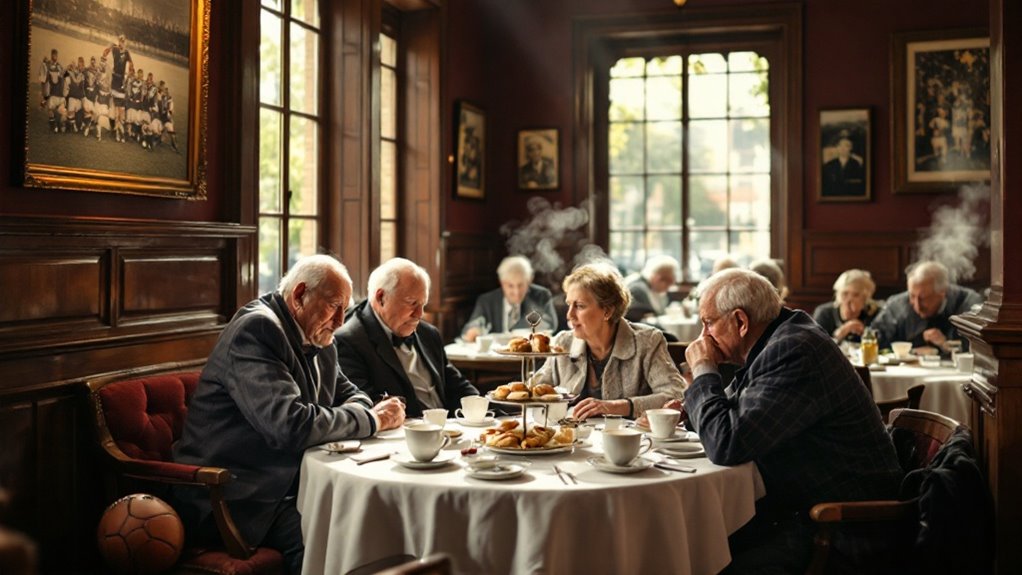Physical Address
304 North Cardinal St.
Dorchester Center, MA 02124
Physical Address
304 North Cardinal St.
Dorchester Center, MA 02124

You’ll find Argentina’s British character deeply woven into its national fabric through nearly 200 years of close ties. From the 1820s, British investment transformed Argentina’s economy, while immigrants established prestigious schools and social clubs that still shape elite society today. The British introduced everything from afternoon tea customs to football, built vast railway networks, and created educational institutions that continue to influence Argentine culture. There’s much more to discover about this unique Latin American-British fusion.

While many Latin American nations established diverse trading relationships after gaining independence, Argentina’s economic ties with Britain blossomed into an extraordinary partnership that would shape both countries for over a century.
You’ll find the roots of this relationship in the 1820s, when President Rivadavia’s liberal policies opened doors to British investment, despite initial setbacks from the Cisplatine War.
The partnership flourished between 1870-1914, with Argentina serving as a crucial economic ally by providing vital agricultural production that satisfied British consumer demands while importing British textiles and iron.
In Argentina’s upscale neighborhoods, you’ll find British influence woven deeply into the fabric of elite society through prestigious sports clubs and private schools that have shaped generations of leaders.
The hotel of institutions like the Buenos Aires Cricket Club and St. George’s College created exclusive social spaces where Anglo-Argentine traditions flourished and became aspirational markers of class mobility.
While these British-style establishments originally catered to expatriate communities, they’ve evolved into powerful cultural institutions that continue to influence Argentine society’s upper echelons through sport, education, and social networking. The introduction of afternoon tea customs transformed local dining habits, giving rise to Argentina’s beloved merienda tradition that persists today.
British expatriates left an indelible mark on Argentina’s sporting culture through the hotel of prestigious athletic clubs that shaped the nation’s recreational landscape.
You’ll find their influence most prominently at the Hurlingham Club, founded in 1888, which introduced polo and became the sport’s spiritual home in Argentina. But that’s just the beginning of their sporting legacy. The club’s extensive facilities include five polo fields and stables for 300 horses, cementing its status as a premier sporting institution.
The British community didn’t stop there – they established several groundbreaking institutions, including the Buenos Aires Cricket Club in 1864, one of the oldest cricket clubs outside Britain.
They also shaped football’s early days through the Alumni Athletic Club, founded by English school students in 1898.
Even today, you can trace British influence in clubs like Rosario Central and Belgrano Athletic, which helped popularize rugby and hockey among Argentina’s elite.
Throughout Argentina’s educational landscape, you’ll find the unmistakable fingerprints of Anglo influence in over 30 British-curriculum schools that have shaped generations of students since the early 20th century.
You can trace this educational legacy through prestigious institutions that prepare students for British exams while maintaining strong ties to UK testing systems like IGCSE. With Argentina achieving a 98.1% literacy rate by 2015, these British-influenced schools have contributed to the nation’s strong educational foundation.
These institutions haven’t just educated students – they’ve created cultural bridges, shaping Argentina’s unique blend of Latin American and British sensibilities that you’ll still notice today.

When you look at Argentina’s urban landscape today, you’ll find British fingerprints everywhere, from the iconic railway stations to the intricate water systems.
Britain’s engineering prowess transformed Argentina’s cities through an ambitious 23,994-kilometer railway network that connected farms to ports, while simultaneously introducing Victorian-inspired infrastructure like the Palace of Running Waters. This massive railway expansion made Argentina home to the tenth largest railway system in the world by 1910.
You can trace this British-led modernization through the Scottish cast-iron elements that still define major landmarks, from the grand Retiro Station to the functional yet elegant Palermo Bridge, all of which turned Argentina’s cities into showcases of industrial-age innovation.
As railways snaked their way across Argentina’s vast landscape in the mid-19th century, they sparked one of Latin America’s most dramatic urban transformations.
You’ll find British fingerprints everywhere in this railway revolution, which turned Argentina into an economic powerhouse by 1930. British companies built over 20,000 miles of track, connecting Buenos Aires to the fertile Pampas and creating an export boom that’d make your head spin. The ruling elite’s support for these foreign railway ventures helped establish Argentina’s position as a global economic player.
Those tracks didn’t just carry cargo – they carried Argentina straight into the world’s top 10 economies.
Modern Argentina’s urban landscape tells a fascinating story of transformation, one that’s light-years away from its British railway roots.
You’ll find Buenos Aires leading the charge with its impressive Metrobus Sur system, whisking 250,000 passengers daily through the city while slashing commute times by 20%. The iconic Avenue 9 de Julio, once a maze of 20+ car lanes, now prioritizes efficient bus corridors that save you half an hour per trip.
The city’s commitment to sustainable mobility doesn’t stop there. Recent initiatives aim to achieve 349 million tons of CO2 emissions by 2030.
With 300 kilometers of bike lanes and a 500-bike sharing system, you’re witnessing a shift toward greener transportation. Meanwhile, smart city initiatives and extensive housing plans are reshaping neighborhoods, proving that Argentina’s urban future draws more inspiration from modern innovation than its colonial past.
Throughout Argentina’s educational landscape, British-influenced schools stand as powerful symbols of social status and privilege, creating a stark divide between the wealthy elite and the general population.
You’ll find these prestigious institutions concentrated in Buenos Aires’ affluent northern suburbs, where annual fees can reach a staggering $25,000. Leading institutions like St. Georges College maintain strong connections to British educational heritage.
This educational apartheid shapes Argentina’s future leaders, as alumni networks create exclusive professional opportunities that reinforce socioeconomic divisions for generations to come.

While Argentina’s British influence permeates many aspects of daily life, you’ll find it most visibly in the nation’s cherished cultural practices, from the genteel ritual of afternoon tea to the passionate embrace of football.
You can experience this legacy in Welsh tea houses in Patagonia, where you’ll enjoy traditional afternoon tea complete with milk, sugar, and the distinctive torta negra galesa.
Meanwhile, British railway workers left an even more dramatic mark when they introduced football in the late 1800s. They built simple pitches along the tracks, unknowingly planting the seeds for Argentina’s unique playing style that emphasizes creativity and improvisation. Notably, the country’s railway system still operates on the left track, maintaining this distinct British characteristic.
The British sporting influence didn’t stop there – you’ll still find thriving polo, cricket, and rugby communities, with Los Pumas consistently ranking among the world’s top rugby teams.
Despite the historical echoes of British influence, today’s Anglo-Argentine relationship thrives through dynamic partnerships that you’ll notice across business, education, and culture.
You’ll find over 350 British companies operating in Argentina, while thousands of Argentine students pursue their dreams at prestigious UK universities. The connection’s vibrancy is evident in the annual Innovation Week, where tech startups from both nations collaborate on groundbreaking projects. The rich fertile Pampas region has long attracted British agricultural investments, sustaining a vital economic bond between the nations.
Like a bridge spanning two worlds, Argentina’s British heritage flows through its cultural veins, from the afternoon tea you’ll enjoy in Buenos Aires cafes to the passionate football matches you’ll witness in local stadiums. You’ll find that this unique Anglo-Latin fusion has created a distinct identity that’s as complex as a tango dance, yet as familiar as an English garden, making Argentina stand out as South America’s most British-influenced nation.